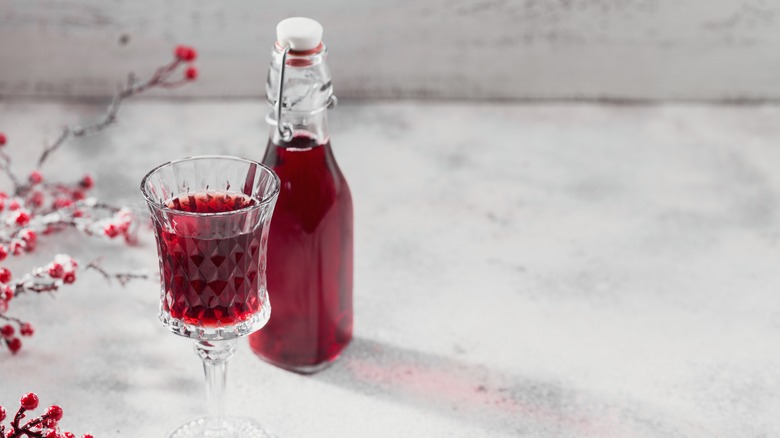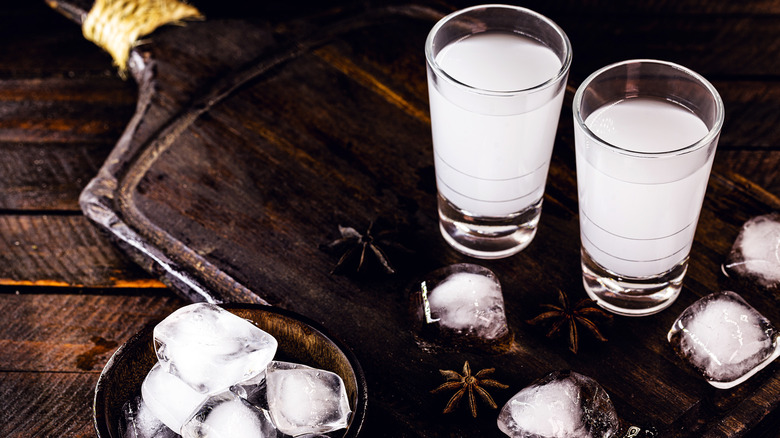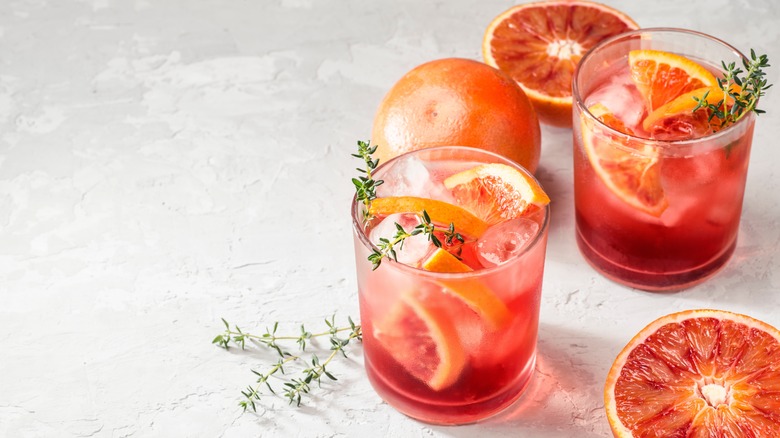Here's Why Your Homemade Campari Turned Cloudy
Campari's centuries-old recipe is untouchable, but that doesn't mean it's the one and only. Crafting your own Italian-style bitter herbal liqueur opens the door to a whole new range of flavors. And with Campari's original recipe closely guarded, it becomes less about mimicry and more about experimentation. Gather unique herbs, barks, dried citrus rinds, and spices; then throw them into a neutral-grain liquor like vodka, and rest for two weeks. Once ready to bottle, combine with simple syrup and water, then a dash of food coloring for extra vibrancy.
However, at exactly this final mixing step, the most common pitfall occurs — turning the concoction cloudy. The contact with water doesn't yield an eye-catching ouzo-like white color, either, but instead an unpalatable muddy hue. Feel like all the assembly renders a useless product? Not quite; there are some techniques to repair the damage. Let's dive into why it happens to understand how to fix it.
Why homemade Campari turns cloudy
As it turns out, the cloudy reaction between alcohol and water has a specific name — the louche effect. Most famously, it occurs with spirits like absinthe, raki, ouzo, and other regional alcohols that contain anise. For such liquors, the clouding is a desirable quality, showcasing there's an adequate ratio of anise in the liquid.
The change in color occurs due to the essential oils present in the anise. When contained in an alcohol solution and exposed to water, they create a micro-emulsion. On a molecular level, it's like the tiny droplets of oil are in a shell, suspended throughout the final mixture. And most bizarrely, they'll remain stable in such a form indefinitely, a phenomenon with no real explanation.
As with other emulsions — think like the creation of mayonnaise — several factors affect the process. The first is temperature; louching occurs more readily in colder conditions. And secondly, the speed of mixing impacts the effect, too. Here's how to manage and mitigate louching during Campari creation.
How to prevent and fix cloudy campari
Not all Campari-like liqueurs will result in clouding. If there's no anise in the mix, the effect may not occur at all. For example, even some wormwood-based absinthes won't change color. However, there are essential oils other than anise that may still cause the issue. So with Campari's extensive herbal additions, eilimating anise is not a guaranteed prevention.
Some additional precautions when mixing the infusion, simple syrup, and water can also prevent cloudiness. Maintain the same temperature for all components. And pour the simple syrup in gradually — if the alcohol content remains similar throughout mixing, the particles will be less likely to emulsify.
Regardless, clouding may occur anyways. Thankfully, there is a way to reverse the visual appearance. Put your Campari through a milk wash, which means curdling the liqueur with milk and lemon juice. The protein in the curds will trap the particles responsible for cloudiness. Strain the Campari, and, voila, it's back to its original color. Plus, it'll result in a rounder flavor and thicker texture — all the better for mixing.


